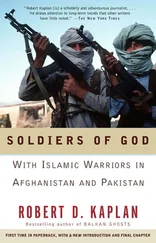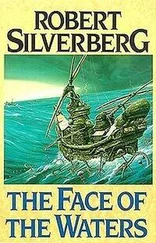5. LexisNexis as of June 25, 2005. See, too, The American Enterprise, September 2005, p. 13.
CHAPTER 8—A DEPENDABLE BLUE-COLLAR PLANE
1. John J. Tkacik, Jr., and Dana Dillon, “China’s Quest for Asia,” Policy Review, December 2005/January 2006.
2. Ibid.
3. Robert D. Kaplan, Imperial Grunts: The American Military on the Ground (New York: Random House, 2005), ch. 5.
4. Colin S. Gray, Another Bloody Century: Future Warfare (London: Weidenfeld & Nicolson, 2005), pp. 119, 46; Everett Carl Dolman, The Warrior State: How Military Organization Structures Politics (New York: Palgrave Macmillan, 2004), p. 37.
5. See Kaplan, Imperial Grunts, ch. 2.
6. Tkacik and Dillon, “China’s Quest for Asia.”
CHAPTER 9—TIMBUKTU, SOVIET STONEHENGE, AND GNARLY-ASS JUNGLE
1. See Robert D. Kaplan, Imperial Grunts: The American Military on the Ground (New York: Random House, 2005), “Prologue: Injun Country.”
2. Ibid., ch. 4.
3. Ibid.
4. Ibid.
5. Ibid., ch. 2.
CHAPTER 11—THE MORBID TYRANNY OUT OF ANTIQUITY
1. Robert Killebrew, “A Different Model for Iraq: Forget the Vietnam Analogies; Korea’s a Better Model,” The Washington Post, Apr. 9, 2006.
2. Peter Beck, director, North East Asia Project, International Crisis Group, interview, July 3, 2006, Seoul.
3. Bernard DeVoto, The Year of Decision: 1846 (Boston: Little, Brown, 1943).
AFTERWORD—THE NON-WARRIOR DEMOCRACY
1. See The Book of War, comprising Sun-Tzu’s The Art of Warfare, trans. Roger T. Ames (1993), and Karl von Clausewitz’s On War, trans. O. J. Matthijs Jolles (1943) (New York: Modern Library, 2000). See, too, Robert D. Kaplan, Warrior Politics: Why Leadership Demands a Pagan Ethos (New York: Random House, 2001), ch. 4.
2. Ralph Peters, “The Counterrevolution in Military Affairs,” The Weekly Standard, Feb. 6, 2006.
3. Fyodor Dostoevsky, The Brothers Karamazov, trans. Constance Garnett (1879–80; New York: Modern Library, 1996).
4. Paul Bracken, Fire in the East: The Rise of Asian Military Power and the Second Nuclear Age (New York: HarperCollins, 1999), p. 111.
5. Ibid., pp. 112, 136, 138.
6. Marine Maj. Gen. Michael R. Lehnert recited these and other statistics in a speech before the San Diego Chamber of Commerce, June 26, 2006.
7. Ibid.
8. James L. Stokesbury, A Short History of the Korean War (New York: Morrow, 1988), p. 157.
9. Colin S. Gray, Another Bloody Century: Future Warfare (London: Weidenfeld & Nicolson, 2005), p. 34.
10. Bracken, Fire in the East, pp. 26–29.
11. Robert D. Kaplan, “Supremacy by Stealth,” The Atlantic Monthly, July/August 2003.
Robert D. Kaplanis a correspondent for The Atlantic Monthly and the author of eleven previous books on foreign affairs and travel, which have been translated into many languages. These books include Imperial Grunts , Balkan Ghosts , Warrior Politics , and The Coming Anarchy . He is the Class of 1960 Distinguished Visiting Professor in National Security at the United States Naval Academy.
Imperial Grunts: On the Ground with the American Military
Mediterranean Winter: The Pleasures of History and Landscape in Tunisia, Sicily, Dalmatia, and the Peloponnese
Warrior Politics: Why Leadership Demands a Pagan Ethos
Eastward to Tartary: Travels in the Balkans, the Middle East, and the Caucasus
The Coming Anarchy: Shattering the Dreams of the Post Cold War
An Empire Wilderness: Travels into America’s Future
The Ends of the Earth: From Togo to Turkmenistan, from Iran to Cambodia—A Journey to the Frontiers of Anarchy
The Arabists: The Romance of an American Elite
Balkan Ghosts: A Journey Through History
Soldiers of God: With Islamic Warriors in Afghanistan and Pakistan
Surrender or Starve: Travels in Ethiopia, Sudan, Somalia, and Eritrea
Acclaim for Robert D. Kaplan’s
HOG PILOTS, BLUE WATER GRUNTS
“Exhaustive…. Kaplan strives to humanize these menand women by bridging the gap between complex and unpopular foreign policy and those who must do the heavy lifting and think on the fly.”
—
The Seattle Times
“Incisive and valuable…. Kaplan combines the travelwriter’s keen eye for detail and the foreign correspondent’s analytical skill to produce an account of America’s military worthy of its subject.”
—
Publishers Weekly (starred review)
“Kaplan [is] an intrepid expert about the American military…. At its heart [the book] is journalism mixed with patriotism. That combination makes for a good book.”
—
The Dallas Morning News
“An extraordinary look at how today’s young people are taking up the challenge of advancing America’s security interests far from home and hearth.”
—
Marine Corps Gazette
“Kaplan is at his best when he highlights the vital yet unsung role of troops like these…. [He] laces his narrative with keen observations.”
—
The Washington Post Book World

FIRST VINTAGE DEPARTURES EDITION, SEPTEMBER 2008
Copyright © 2007 by Robert D. Kaplan
Maps copyright © 2007 by Mapping Specialists, Ltd.
All rights reserved. Published in the United States by Vintage Books, a division of Random House, Inc., New York, and simultaneously in Canada by Random House of Canada Limited, Toronto. Originally published in hardcover in the United States by Random House, an imprint of the Random House Publishing Group, Inc., a division of Random House, Inc., New York, in 2007.
Vintage is a registered trademark and Vintage Departures and colophon are trademarks of Random House, Inc.
The Cataloging-in-Publication Data is on file at the Library of Congress.
www.vintagebooks.com
eISBN: 978-0-307-47269-4
v3.0
Michael Vlahos, “Culture’s Mask: War & Change After Iraq,” Johns Hopkins University, Applied Physics Laboratory, Laurel, Md., 2004. Albeit to a lesser degree, President Bill Clinton also encouraged an expeditionary spirit by frequently deploying the military. Service in the Balkans, despite strict rules of engagement that severely minimized risk, constituted a morale boost compared to interminable training exercises in Germany.
See Sallust’s The Jugurthine War, composed between 44 and 40 B.C., and Douglas Porch’s introduction to the Bison edition of Col. C. E. Callwell’s Small Wars: Their Principles & Practice (1896; Lincoln: University of Nebraska, 1996). These are but two examples of a vast military literature about how imperial powers used their influence.
Initial estimates of Marine casualties were 1,026 killed and 2,600 wounded, later revised to 685 killed, 169 missing, and 2,100 wounded.
Robert Sherrod, Tarawa: The Story of a Battle (New York: Duell, Sloan and Pearce, 1944), p. 126. For another book with a stirring description of the fighting on Tarawa, see Leon Uris, Battle Cry (New York: Putnam, 1953).
Читать дальше













